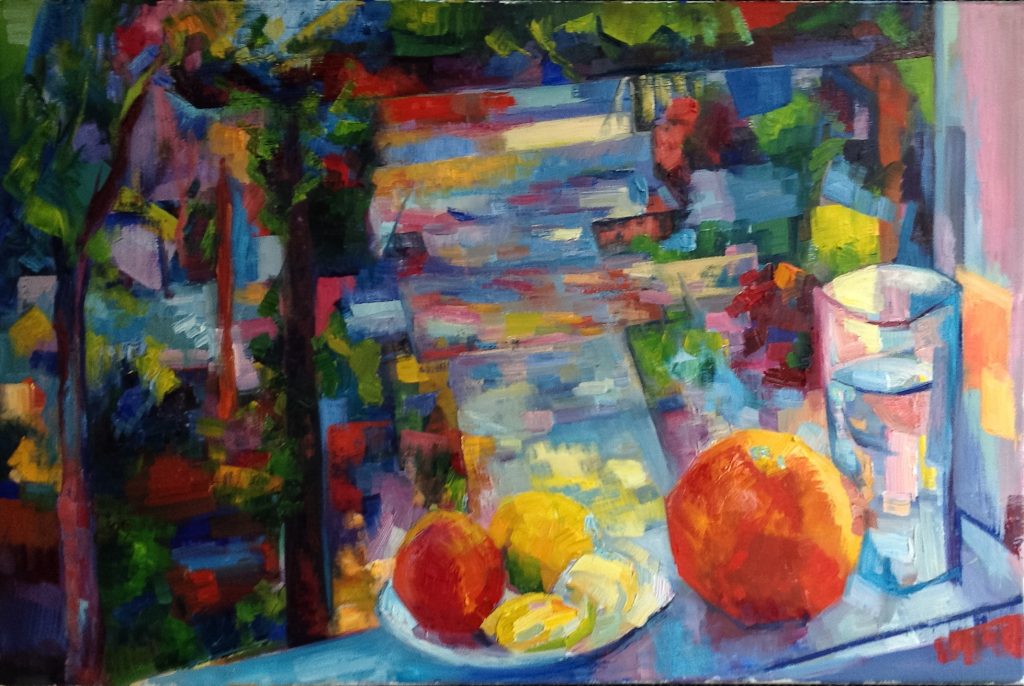
This week, I started the preliminary study of Sonnet 86 (“Was it the proud full sail of his great verse…”). “Study” is probably not the right word for this process of letting the sonnet sink fully into my mind-body system and create the seed of a future painting. This description makes the process seem awfully like sexual intercourse, and maybe it is, indeed, a more appropriate simile than “study”.
I am trying to get (back) into biweekly rhythm for this series — a week of preliminary deep engagement with the sonnet, and then a week of painting the sonnet. Like slow (very slow) breathing in and out. This gives me every other week to paint other things — just to keep me alive through the “breathing in” week. This week, I returned to the view from my studio window, which I started two weeks earlier, while studying Sonnet 85.
Unexpectedly, I realised on Monday that 86 is the last sonnet of the composition I am working on, which I call, for now, “Poem and Muse”.
There is a certain randomness in how the sequence gets broken into these nine-sonnets and sixteen-sonnets sequences; the only mathematical “given” in this is that there will be ten nine-sonnets composition and four sixteen-sonnets composition — this “solution” is determined uniquely by the total number of sonnets. For some reason, I imagined this one will contain sixteen sonnets, but there is a very logical thematic break between eight six and eighty seven – I have no idea how I missed it before. It means that a lot of compositional adjustments I did to individual paintings to create the sense of overall unity were misguided, but somewhat miraculously, the unexpected shift to the nine-sonnets idea works, even though it changes the relative positioning of the individual paintings radically.
On the other hand, the shift gives me an opening into this sonnet, the last sonnet of the composition. It contains, in a sense, a summary, a collage of the whole subsequence, and ends in a complete breakdown of “matter” (“then lacked I matter“). In the future painting, I imagine, it will be a cubist-like breakdown of form. And the colour harmony is also largely determined by the painting’s role in the composition: it ought to lean towards reds, for the sake of the overall harmony. This is a very abstract vision so far, but it’s a beginning.
I love how this sonnet suggests familiarity with ghosts/spirits/muses that visit the “rival” poet, as though they are the same ghosts. This rhymes with my thoughts over these last days, about our basic (in)ability to share experiences. Even if we think we recognise an experience from someone else’s description, it may still be a delusion.
On many levels, it’s a continuation of the previous sonnet’s themes; the challenge is not the very existence of someone else’s great verse (or great paintings, as it happens), but the suspicion that the experience you need to share is already expressed, so there is nothing to be added. It’s only the gap between inner experience and its outer expression, their incomplete alignment, that opens the path for the next artist, the hope to add something new, even if it’s only saying the same old thing in a new way.